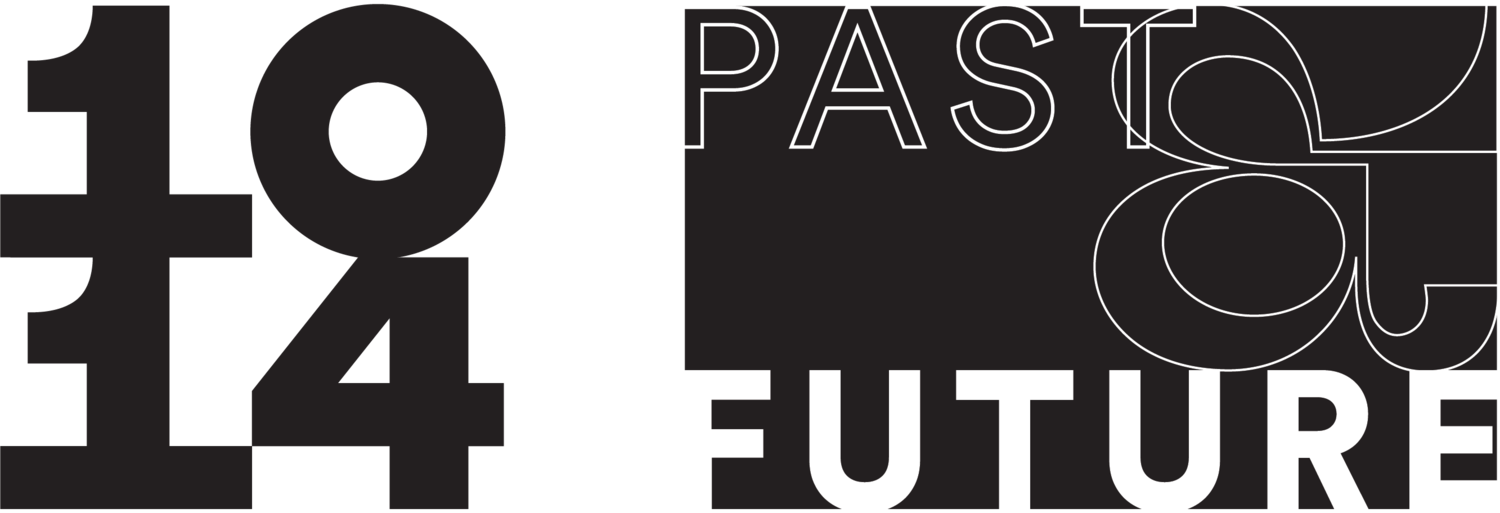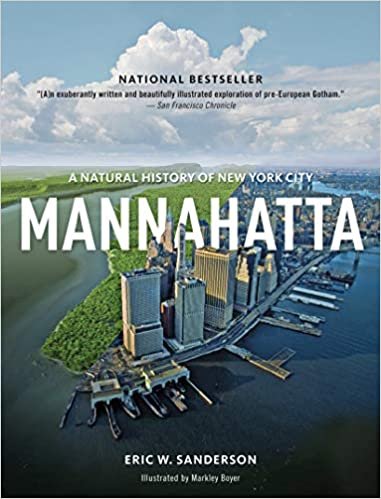
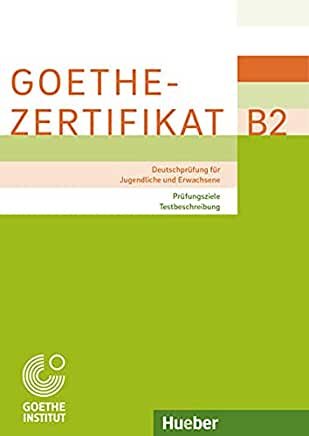
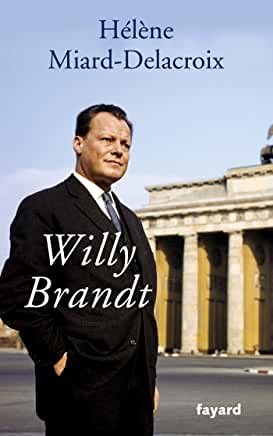
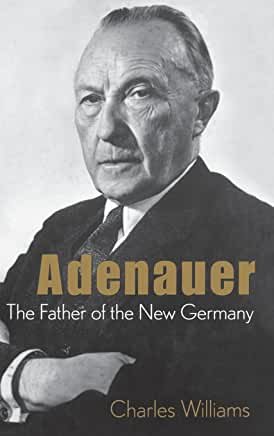
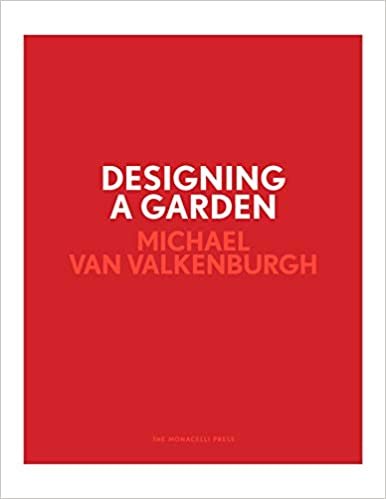
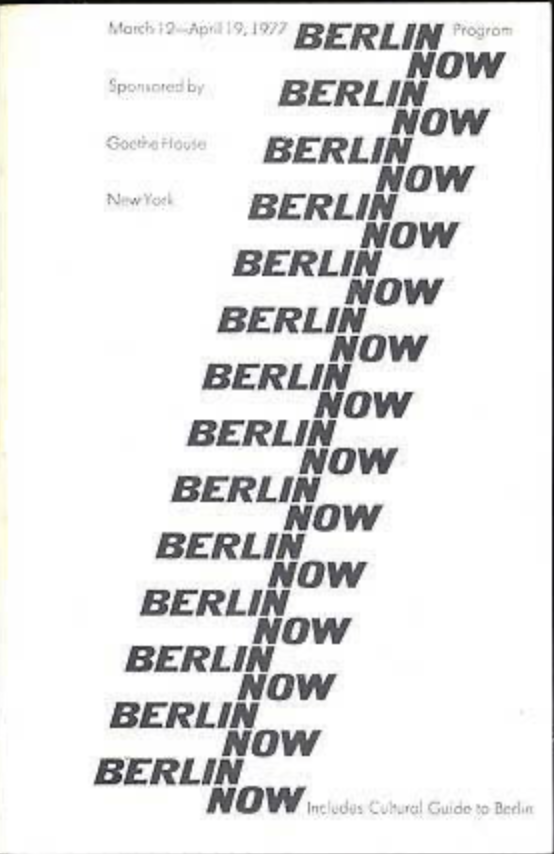
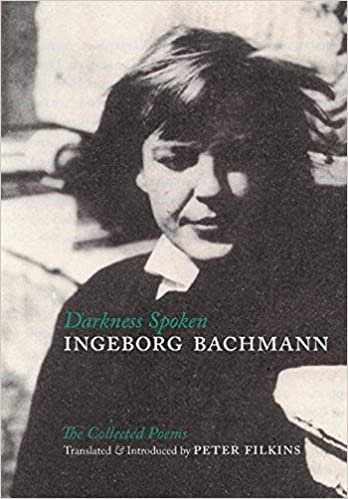
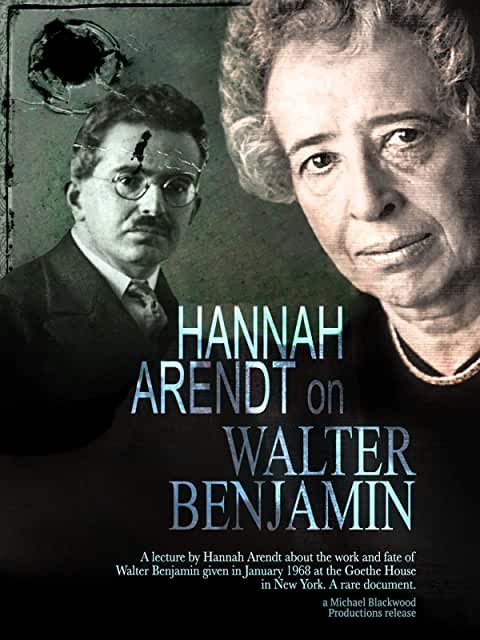
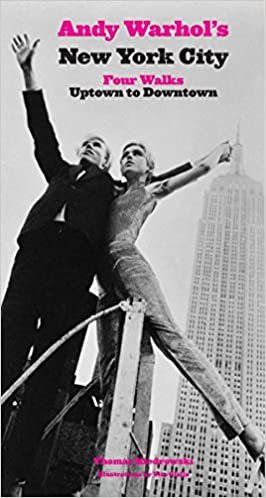
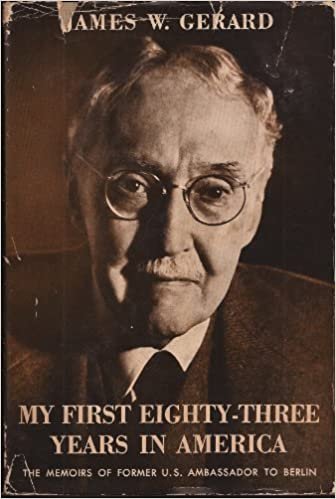


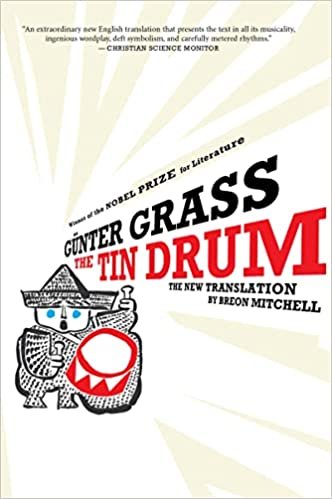
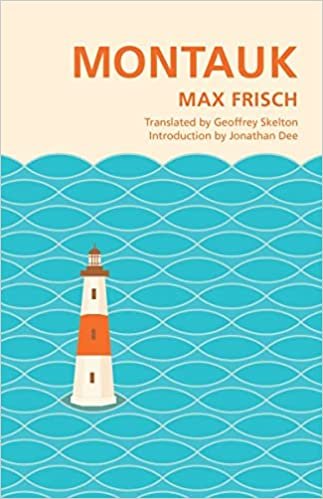
A Century of Happenings
EVENTS + PERSONALITIES
An extraordinary variety of social events and cultural programs have unfolded at 1014 Fifth Avenue since the townhouse was built in 1907. From banquets and cocktail parties to film screenings, book talks, dance performances, symposia, exhibitions, and art installations, the building continues to host stimulating gatherings and attract diverse audiences from New York and beyond.
1906 July
Developers William W. Hall and Thomas M. Hall, partners in the firm William Hall’s Sons, file plans to construct a pair of private residences at 1014 and 1015 Fifth Avenue, each with six stories and a basement. The structures are the first on this block facing the Metropolitan Museum of Art. The architecture firm of Welch, Smith & Provot, led by Alexander McMillan Welch, designs the townhomes in the Neoclassical French-influenced Beaux-Arts style.
1909 December
1014 Fifth Avenue is sold by William Hall’s Son’s to Edith Evelyn Clark and her husband, the stockbroker James F. A. Clark, for a reported $275,000.
1910 Dec 7
After furnishing their new home, Evelyn and James Clark inaugurate 1014 Fifth Avenue with a dinner party and dance in honor of Evelyn’s sister, Dorothy Bigelow.
1911 Feb
The Clarks offer their furnished home at 1014 Fifth Avenue for lease while residing in an apartment on East 40th Street.
1912 Sept 12
Ada Sorg Drouillard, while separated from her husband, Captain. J. P. Drouillard, leases the home for $20,000 per year.
1919 Jan 27
The Clarks, once again residing at 1014 Fifth Avenue, host a formal dinner party in honor of Walter de Curzon Poultney, Mrs. Clark's cousin and a renowned high-society dandy from an old Baltimore family.
1922 Jan 17
The Clarks give a dinner for Countess Priscilla (née Moore) of Annesley, England.
1922 June
Mrs. Edith Evelyn Clark, owner of 1014 Fifth Avenue, files a petition with the city tax department to lower the assessed value of the home. She claims property value has declined due to the influx of apartment buildings and heavy traffic that makes it “impossible to secure comfort during certain hours.”
1926 June 22
1014 Fifth Avenue is sold from Edith E. Clark to Mary D. Gerard via a third party, Mina Kucher. The sale is part of a complex transaction involving six adjoining lots, resulting in the demolition of 1015 Fifth Avenue and the construction of a large apartment building at the corner of Fifth Avenue and 83rd Street.
1933 Oct 15
James W. Gerard pens a blistering critique of Hitler's Mein Kampf on the front page of the New York Times Book Review.
1934 Nov 14
Fifty guests attend the wedding of Hannah Lee Sherman, grandniece of Civil War general William Tecumseh Sherman, and State Senator Walter Stokes, in the wood-paneled drawing room of the Gerard Residence. A Presbyterian minister officiates.
1941 Jan 9
The Gerards host a dinner banquet for Thomas. J. Walker, newly appointed judge of U.S. Customs Court.
1941 Mar 25
The Gerards host a formal dinner in honor of Lady Halifax of Great Britain. The guests, all women, include a small contingent from the British embassy and two dozen powerful American women.
1948 Oct 22
Mary and James W. Gerard invite 157 high-society guests to a cocktail party in honor of ten German publishers and editors brought to New York by the American Press Institute, then affiliated with Columbia University’s School of Journalism. “Some of them enjoyed themselves so thoroughly that they almost forgot to go home,” the institute’s director wrote in a thank-you letter.
1956 Jan
Mary Daly Gerard dies at the age of 80. She and her late husband had no children, but they left an inheritance for 10 employees as well as extended family members. Former servants continue to live in the house for a few months, with full pay.
1960 Jan 18
Conveyance of 1014 Fifth Avenue (city block 1494, tax lot 72) from the estate of Mary D. Gerard to Manny E. Duell, a New York developer.
1960 July 22
Conveyance of 1014 Fifth Avenue (city block 1494, tax lot 72) from developer Manny E. Duell to the Federal Republic of Germany.
1961 Feb 6
Goethe House opens new headquarters at 1014 Fifth Ave. The dedication by James B. Conant is followed by a reception for the Hamburg-based cast of Faust, led by acclaimed actor-director Gustaf Gründgens, performing a two-week run in New York.
1961 Feb 23
Dr. Bruno E. Werner, author and cultural attaché of the German Embassy in Washington, lectures on "The Myth of the 1920s."
1961 March
Professor Wolfgang Lotz of New York University gives a three-part course on “German Architecture of the 18th Century."
1961 Mar 18
Willy Brandt, Mayor of West Berlin, tells a group of 125 members of Goethe House that East Berliners need access to the culture of West Berlin. “This is why we guard so jealously free access to our city and free traffic between its two parts,” he said according to the New York Daily News.
1961 Apr
“German Literary Expressionism 1910–1928” exhibition at the newly opened Goethe House.
1961 Dec
Exhibition of paintings of Albert Bloch, the only American member of the Blaue Reiter, a formative group in German Expressionism.
1962 Mar 9
Eight leaders of West Berlin youth organizations, are interviewed at Goethe House after touring the U.S. They say some Americans cannot distinguish between West German democracy and totalitarian regimes, and that West Germany should not remain open to the East.
1971 Mar 16
Author Max Frisch reads from unpublished works.
1971 Mar 23
Lecture by professor Jürgen Habermas: “What is the use of philosophy today?”
1971 Oct 28
Heinrich Böll reads from his works.
1971 Nov 28
Together with Lincoln Center, performance of “Stimmung” by composer Karlheinz Stockhausen.
1972 Apr 3
Launch of “Week of Young German Film” with director Volker Schlöndorff.
1973 May 7
“Education and Educational Policy in West Germany” lecture by Dr. Hildegard Hamm-Brücher.
1973 Sept 21
Future Nobel laureate author Günter Grass lectures on “The Writer as Citizen” in cooperation with the PEN America Center, concurrent with exhibition of etchings by Grass.
1973 Dec 15
Reading of the work of Hans Sahl by actress Maria Becker.
1974 Jan 30
Reading and discussion with Hans Magnus Enzensberger, “Conversations with Marx and Engels”
1974 Apr 23
Documentary film festival, “Berlin and New York in the Twenties” premier attended by Mayor Klaus Schütz of Berlin and Manhattan Borough President Percy Sutton.
1974 Oct 16
Concert, films and discussion with American composers in honor of Mauricio Kagel.
1974 Apr 5
Cocktail reception with author Max Frisch to celebrate the publication of Max Frisch: Tagebuch 1966-1971. Reading and discussion co-organized with PEN America, Columbia University and City University of New York.
1976 Sept
Reception for German filmmakers on the occasion of the New York Film Festival.
1977 Spring
“Berlin Now” spring festival included exhibitions at Goethe House and three other venues; 31 film screenings, six concerts, and various talks and performances. The New York Times calls the program “a starburst of culture from Berlin.”
1977 Fall
Exhibition at Goethe House of 60 collage and photomontage works by Hannah Hoch, a pioneering Dada artist too long overshadowed by her male contemporaries.
1978 Spring
“The Classic German Film—from Caligari to Kolberg” film festival presented in New York and Washington, including events at Goethe House.
1978 Fall
“Aspects of German Expressionism” exhibition and film festival presented at Goethe House and partner institutions.
1979 Sept
“German Film Directors in Hollywood,” film festival at Goethe House includes 29 American films, made between 1924 and 1956 by Germans and Austrians who had emigrated from their homeland, with a lecture by Douglas Sirk.
1980 Mar
The 80th birthday of German-American composer Kurt Weill was celebrated with a concert, roundtable discussions, and film screenings.
1980 Apr 1
Cocktail reception at Goethe House in honor of Volker Schlondorff, director of the award-winning film The Tin Drum (1979), followed by a screening at a cinema on Third Avenue at 60th Street.
1980 September
“Greta Garbo in Berlin” film festival screenings accompanied by an exhibition of rare photographs, stills, and memorabilia from the famous actor’s years in Berlin.
1981 Spring-Fall
Year-long cultural program, “Germany in the 19th Century—Cultural Aspects of an Age” includes 10 exhibitions, 4 symposia, 21 lectures, 1 music event, 4 theatre productions, and an accompanying film program and anthology.
1981 Mar
Screening of Woyzeck, directed by Werner Herzog, with Klaus Kinski.
1981 Apr
Exhibition of 19th-century watercolors by Karl Blechen.
1981 May 5
Lecture on the Brothers Grimm by Bruno Bettelheim, a historian of fairytales.
1981 Sept
"When Words Fail: 100 Years of German Photography” colloquium and film program at Goethe House, concurrent with exhibitions at the International Center of Photography and a symposium at the Guggenheim Museum.
1981 Oct
Screening of films celebrating the work of German playwright Heinrich von Kleist.
[1981 TK]
Exhibition of 19th-century scientific and technological objects from the collection of the Deutsche Museum in Munich.
1982 Jan
“'When Words Fail: German Photography from its Origins through the Avant-Garde, 1840-1940,” program of exhibitions, lectures and films in collaboration with the International Center for Photography, SFMOMA and the Long Beach Museum of Art in California.
1982 May 13
Screening of the 1960 television production of Faust, starring and produced by Gustaf Gründgens.
1982
Readings by Martin Walser and Luise Rinser
1982 Dec
“The Bowery: Portrait of a Changing Street,” photographs by Carin Drechsler-Marx exhibited at Goethe House and the Museum of the City of New York.
1983 Apr
Exhibition of 50 lithographs and watercolors by Nuremburg-based portrait artist Michael Mathias Prechtl.
1983 Oct
Exhibition of two dozen rare, handmade quilts by Pennsylvania German folk artists between 1850 and 1920.
1983 Sept 29
A panel of German and American scholars discusses the “Image of America for 20th Century German Literature.”'
1983 Oct 14
Hans L. Trefouss talks about the German-American citizen Carl Schurz, memorialized in a park along the East River, near Gracie Mansion and the formerly German immigrant enclave of Yorkville.
1984 Jan
The Brooklyn Arts and Culture Association's 18th annual Independent Film and Video Exposition includes screenings at Goethe House
1984 Apr
A series of films reflecting the state of youth in Germany begins with Class Enemy (1983).
1985 March 20-21
P.E.N. International, “Symposium Exile U.S.A.” In memory of Ludwig Wronkow, the German-American journalist, cartoonist, and editor of Aufbau.
1985 Oct
“The Topsy-Turvy World — Moral Satire and Nonsense in the Popular Print,” exhibition of 86 prints, representing 500 years of offbeat views.
1985 Nov 8
“German and American Dance: Yesterday and Today” symposium co-sponsored by Goethe House and the Brooklyn Academy of Music.
1986 Apr
Retrospective of films by the Berlin-Born director Egon Monk, a former assistant to Bertolt Brecht, starting with “Lambs of Slaughter” (1963).
1986 May
Exhibition of dioramas of Nuremberg at every stage of its history.
1987 Mar
Exhibition of Berlin photographs by photojournalist Robert Capa.
1987 October 23
Opening of installations by three contemporary West Berlin artists: Karl-Heinz Eckert, Raimund Kummer and Hermann Pitz at Goethe House.
1988 May
“Resistance, 1933-45,” an exhibition about German opposition to Nazism, is accompanied by several short films.
1988 Oct 20
Renowned film director Alexander Kluge speaks at Goethe House as part of the film festival “Alexander Kluge: A Retrospective.” Screenings at Anthology Film Archives and Goethe House.
1988 Nov
The history of German rock-and-roll is depicted in “Gefuhl + Harte” (Feeling + Hardness), an exhibition of sound and video cassettes, posters and a 30-minute videotape featuring rock musician Nina Hagen.
1989 Jan
Screening of Ulrike Ottinger’s documentary “China — The Arts, The People,” in conjunction with “Germany in Asia” film festival co-sponsored with the Asia Society.
1991 May
Reopening of Goethe House New York after a two-year renovation of 1014 Fifth Avenue by Peter Englert & Associates. Upgrades include new lighting and audiovisual systems and a sunlit reading room appended to the library,
1991 Oct
Exhibition of artist Miyase Ceren's collaged black-and-white photos.
1991 Dec. 18
“Mostly Wolfgang,” a play with music by the poet Jon Swan based on the letters of Mozart, is presented by the New York Art Theater Institute at Goethe House New York.
1992
Rirkrit Tiravanija exhibits work at Goethe House as part of the exhibition “Consumed.”
1992 Sept
“Hannah Hoch: Collages” exhibition of German Dada artist.
1993 April
“Parallax View: New York–Koln,” exhibition of young German and American artists spread between Goethe House and P.S.1 Contemporary Art Center.
1993 October
“Berlin: Designing a Capital for the 21st Century” presents urban design proposals by New York architects for a new government center in Berlin.
1994 Jan
Exhibition of photographic grotesques by Berlin artist Thomas Florschuetz.
1994 June 17
The “Rosa von Praunheim Marathon” at Goethe House New York includes screenings of three of the activist filmmaker's works, in conjunction with Gay Games IV and the 25th anniversary of the Stonewall uprising.
1994 Oct
“Nietzsche as Composer: A Musical Argument” included with a musico-philosophical lecture by Tali Makell and performances by Eric Grossman, violinist, and Jon Villars, a tenor.
1994 Nov
“The Ministry of Illusion: German Film 1933-45,” film festival co-sponsored by Goethe House and Film Society of Lincoln Center.
1995 Nov 11
The Deutsch-Nuyorican Poetry Festival highlights new literature written by Afro-Germans, Turkish Germans, Japanese Germans, rappers, sound poets, and poets from the classical mold. Opening event at Goethe House; subsequent events at the Nuyorican Poets Café.
1996 Feb 6
Opening of Rolf Julius and Hans Otte, “sound – spaces” exhibition presented by Wulf Herzogenrath.
1996 Oct 18
Reception for the opening of THE PIER, a sound and light installation by Hans Peter Kuhn, organized by Goethe House New York and the Hudson River Park Conservancy.
1998 Feb 13
Opening of “One of Each,” the first solo exhibition of Karsten Bott, introduced by remarks from the director and curator of the Portikus exhibition space in Frankfurt.
1998 Mar. 17
Reading of narrative poems by Ursula Duba, “Tales from a Child of the Enemy,” evoking the turmoil of the author’s early childhood years in war-torn Germany and her subsequent confrontation with her heritage when she learns of the Holocaust.
1998 December
Screening of Der Platz directed by Uli M. Schuppel. Sponsored by Parsons School of Design and Goethe Institute.
1999 May
German novelist Gert Heidenreich reads from his novel Defying Newton about the romance between two circus performers.
1999 May
Exhibition of paintings on linoleum by Bonn, Germany-based artist Martin Noel.
1999 Sept
To celebrate the anniversary of Faber-Castell pencils, Goethe House exhibits the oldest pencil in existence, along with pencils used by figures like Ulysses S. Grant and Otto von Bismarck.
2000 June
“Beneath the Surface” installation features Alan Sonfist’s portholes depicting marshes, ponds and meadows, as well as Peter Strauss’s maps tracing New York City’s subterranean streams.
2000 Nov
Exhibitions of photographs by the New York artist Sharon Harper.
2004
Candida Höfer, “Traces / Spuren” exhibition of works.
2007 June 29
Günter Grass in conversation with Breon Mitchell, the translator of the new English-language edition of Grass’s classic novel The Tin Drum.
2010 Oct
In Hotel Savoy, a site-specific theater piece by Dominic Huber at 1014 Fifth Avenue, inspired by Joseph Roth’s 1924 novel of the same name, spectators tour the building and interact with “staff members.”
2016 Nov.
“Stuck Together Pieces!” exhibition of work by Elias Wessel including his Landscapes, Cityscapes, Feral, Liebst (Dearest) and Sprung in die Zeit (Time Leap) series.
2019 Apr 11
Performance of Stray Bird, a danced tribute to composer Ursula Mamlok, who, as a teenager, fled from the Nazis, arrived in New York after traveling across three continents, and became one of her generation’s visionary composers. A site-specific evening with choreography by Miro Magloire, Rebecca Walden, and Mara Driscoll, performed in the historic spaces of 1014 by the dancers of New Chamber Ballet, the Momenta Quartet, and selected soloists
2019 Sept 14
Opening of Berlin-based sculptor Jenny Brockmann’s New York debut, a multidisciplinary and discursive exhibition called Dialogues on a Future Communication, curated with Niama Safia Sandy. Participants include Mario Gooden, RRC, Daniel Kronauer, .Dina Shvetsov, Sheen Levine, Jes Fan, Stephanie Dinkins, Shelley Niro, Beldan Sezen, Birgit Möckel, Elizabeth Povinelli, Tasha Douge, Alexander Manevitz, Luciana Solano and Danielle Wu.
2019 September 20
Lecture by Frido Mann: Democracy Will Win, followed by a conversation with Associate Professor Annie Pfeiffer.
2019 Nov 6
Co-commissioned by Performa and 1014, Nairy Baghramian and Maria Hassabi present Entre Deux Actes (Ménage à Quatre), an installation and live performances inhabiting two floors at 1014. Taking cues from the spatial qualities of the building, the two artists turned the domestic space into an intimate stage that probed the interplay of architecture and bodies while teasing out fantasies. Curated by Charles Aubin for Performa 19. Brockmann crafts Seat #16, consisting of 16 individual seats connected by eight intersecting beams.
2019 Nov 26
Citizens, Cities, and Cooperation - Panel discussion about international partnerships between cities with URBAN-X’s Miriam Roure and Berlin Partner’s Christian Herzog, moderated by curator Andrés Felipe Ramirez.
2021 Oct 16
London-based architect David Chipperfield in dialogue with Barry Bergdoll, Meyer Schapiro Professor of art history at Columbia University and architecture curator.
Ideas and Inspiration
A library of thousands of books occupied the ground floor of this building from 1961 to 2009, when it was Goethe House New York. In homage to that library, and to encourage critical discussion and debate across borders, this gallery of book covers offers a sampling of books that address topics in art, architecture, film, social and cultural studies, and neighborhood history that are relevant to this building and its users. 1014 Fifth Avenue is a space to raise questions and share ideas.
Next Chapter
What is 1014’s neighborhood, and who are its neighbors? All New Yorkers have their own versions of the city. Our constantly evolving mental maps—tinged with memory, hope, regret, trauma, and desire—overlay the physical one…
